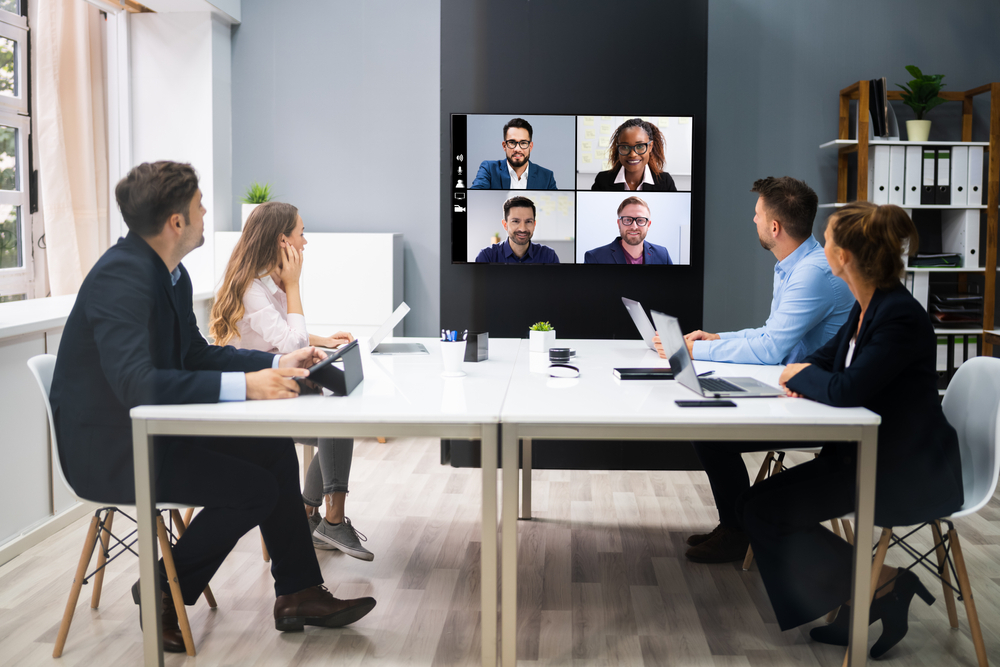Benefits of Hybrid Learning
Key Benefits to Hybrid Learning and Technology in the Classroom
The evolution of hybrid learning in the classroom has been accelerated not only by the pandemic but by technological advancements. This has resulted in the integration of online and digital resources into the traditional classroom setting. The concept of hybrid learning enables remote engagement and seamless collaboration to facilitate and complement face-to-face learning. As hybrid learning continues to transform traditional education into more dynamic, adaptable experiences, this blog will explore the key benefits of hybrid learning and technology in the classroom.
Introduction to Hybrid Learning
Hybrid learning, also known as blended learning, combines traditional in-person learning with online learning to create a flexible and dynamic learning experience. This blended approach allows students to engage face-to-face with an instructor or their peers while harnessing the benefits of digital resources and virtual platforms.
In a hybrid learning environment, students can participate in discussions, collaborate on projects or tasks and join class either in a physical space or, as a remote student. Hybrid learning is increasingly being embraced in an educational setting by providing a flexible and adaptable approach to learning.
Five Benefits of Hybrid Learning
- Flexibility
- Personalized Learning
- Student Engagement
- Cost and Time Efficient
- Learner Analytics
Hybrid learning provides a flexible approach to learning and provides an environment that works for both students in the classroom as well as remote students. Discover the top five benefits of hybrid learning:
- Flexibility – hybrid learning allows students to join classes in-person or online. The flexibility helps to accommodate diverse learning styles along with balancing other commitments and responsibilities ensuring continuity in learning despite physical absence from the classroom.
- Personalized Learning – with the integration of technology and digital tools, hybrid learning experiences can support a student’s pace of learning and style. These tools can also provide access to materials and resources to support their learning needs along with recommendations for future learning or development.
- Student Engagement – hybrid learning helps students engage and participate in discussions, collaborate with peers on projects and access resources all within a more dynamic learning environment.
- Cost and Time Efficient – hybrid learning can help reduce travel costs for students or instructors. With its flexibility, it can make it more accessible for learners who might be time-poor and unable to get to a physical classroom.
- Learner Analytics – hybrid learning is also beneficial for gathering data and analytics with technology platforms that can be used to monitor student engagement, participation, understanding and progress. They can also enhance the quality of future learning programs and content.
In addition, hybrid learning technology helps equip students with important digital literacy skills and prepares them for the demands of the modern workforce.
Integrate Technology into the Classroom
Several types of technology are commonly used for hybrid learning in the classroom that help facilitate communication and learning for in-person and remote students.
- Learning Management Systems (LMS) – LMS platforms provide a centralized hub for institutions to manage content, provide assessments and discussion forums and provide students access to online resources.
- Video Conferencing Tools – tools like Zoom, Teams or Google Meet help with virtual interactions and can be used for live lectures, office hours and collaborative meetings connecting remote and in-person learners.
- Online Collaboration Tools – tools like Slack and Trello alongside other collaborative technology exist to support teamwork and projects and provide a place to share files and communicate.
- Digital Content Creation Tools – platforms like PowerPoint, Google Slides or video editing software solutions exist to support the creation of engaging content for hybrid learning sessions whether it’s a presentation, video or the creation of an online resource for a class.
- Learning Analytics Tools – tools are available which o provide insight and data into student progress and help make decisions about future courses or content based on student needs.
Empower Your Classroom Learning with X2O Media
X2O Media works with customers in the education and corporate learning world to support their hybrid learning needs. X2O OneRoom solution provides an immersive learning and training environment that enables learners and instructors to come together to learn new skills and enhance their knowledge in a consistent, engaging way.
OneRoom takes learning to the next level with the use of spatial audio, perspective cameras, interactive collaboration tools and true content sharing bringing learners together wherever they are in the world.
Get in touch if you would like to know more about hybrid learning and how OneRoom might help overcome your challenges.











